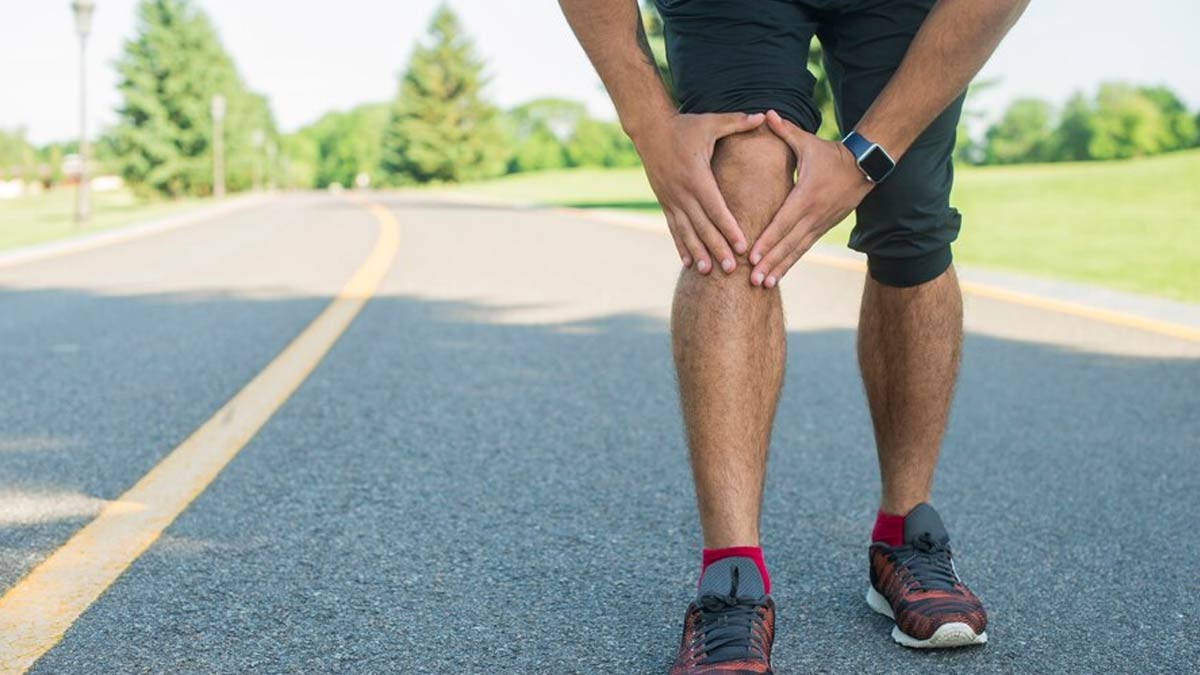
Have you ever felt as if you're unable to bend or straighten your knee? Does doing so often cause pain? If so, it could be a sign of locked knees. Locked knees can be of two types: true locked knees and pseudo-locked knees. A true locked knee is when your knee joint is locked into place and cannot move. On the other hand, pseudo-locked knees occur when pain makes it challenging to move the knee joint. In both cases, seeking medical attention is crucial, and knowing what to do about it is important.
Table of Content:-
Also Read: Health Conditions That Cause Joint Pain Other Than Arthritis
How To Identify A Locked Knee?

Speaking with the OnlyMyHealth team, Dr Ram Kinkar Jha, Chief and Unit Head - Orthopaedics (Unit III), Artemis Hospitals, describes a locked knee as a condition where the knee joint becomes stuck in a specific position, either fully extended or bent, and cannot move freely.
Some of the key characteristics include an inability to fully straighten or bend the knee, pain, swelling, and sometimes a noticeable clicking or catching sensation in the joint.
He also adds that the knee may feel stuck and unresponsive to efforts to move it, often accompanied by discomfort or instability.
What Causes Locked Knee?

According to the doctor, the primary causes of a locked knee include meniscal tears, loose bodies within the joint (such as cartilage or bone fragments), ligament injuries, and arthritis.
Meniscal tears are particularly common and occur when the cartilage in the knee is damaged, he says, adding that people who stand most at risk include athletes involved in high-impact sports, older adults due to degenerative joint conditions, and those with a history of knee injuries or repetitive knee strain.
Factors that increase the chances of a locked knee include:
- Engaging in activities that involve twisting or pivoting motions
- Previous knee injuries
- Repetitive stress on the knee joint
- Ageing (leading to degenerative changes in the knee)
- Conditions like Osteoarthritis (OA) or Rheumatoid Arthritis (RA)
- High-impact sports
- Obesity (which adds stress to the knee)
- Occupations requiring frequent kneeling or squatting
Also Read: Yoga For Health Practising Yoga for Bone Health: Preventing Osteoporosis through Movement
What To Do In The Event Of A Locked Knee?

Depending on the underlying cause, you can seek treatment under the guidance of a medical professional.
For instance, if you have a meniscal tear, a doctor may recommend the RICE procedure, which stands for rest, ice, compression, and elevation, according to Medical News Today.
In the immediate event of a locked knee, Dr Jha recommends resting the affected leg and avoiding putting weight on it.
"Applying ice can help reduce swelling and pain. Over-the-counter pain relievers may also help. Seeking medical attention promptly is crucial," he says, adding, "Treatments may include physical therapy, anti-inflammatory medications, or corticosteroid injections to reduce inflammation."
In severe cases, surgical intervention, like arthroscopy, may be required to remove loose bodies or repair torn cartilage, he notes.
Conclusion
A locked knee can be both uncomfortable and painful. But the good news is that most people can fully recover with proper treatment. Understanding the underlying cause is a crucial step to receiving proper treatment. While medications and, in severe cases, surgery can be beneficial, rest, icing, and compression play an integral role in the recovery process. Remember, putting added pressure on your knee joints can worsen the condition.
Also watch this video
How we keep this article up to date:
We work with experts and keep a close eye on the latest in health and wellness. Whenever there is a new research or helpful information, we update our articles with accurate and useful advice.
Current Version